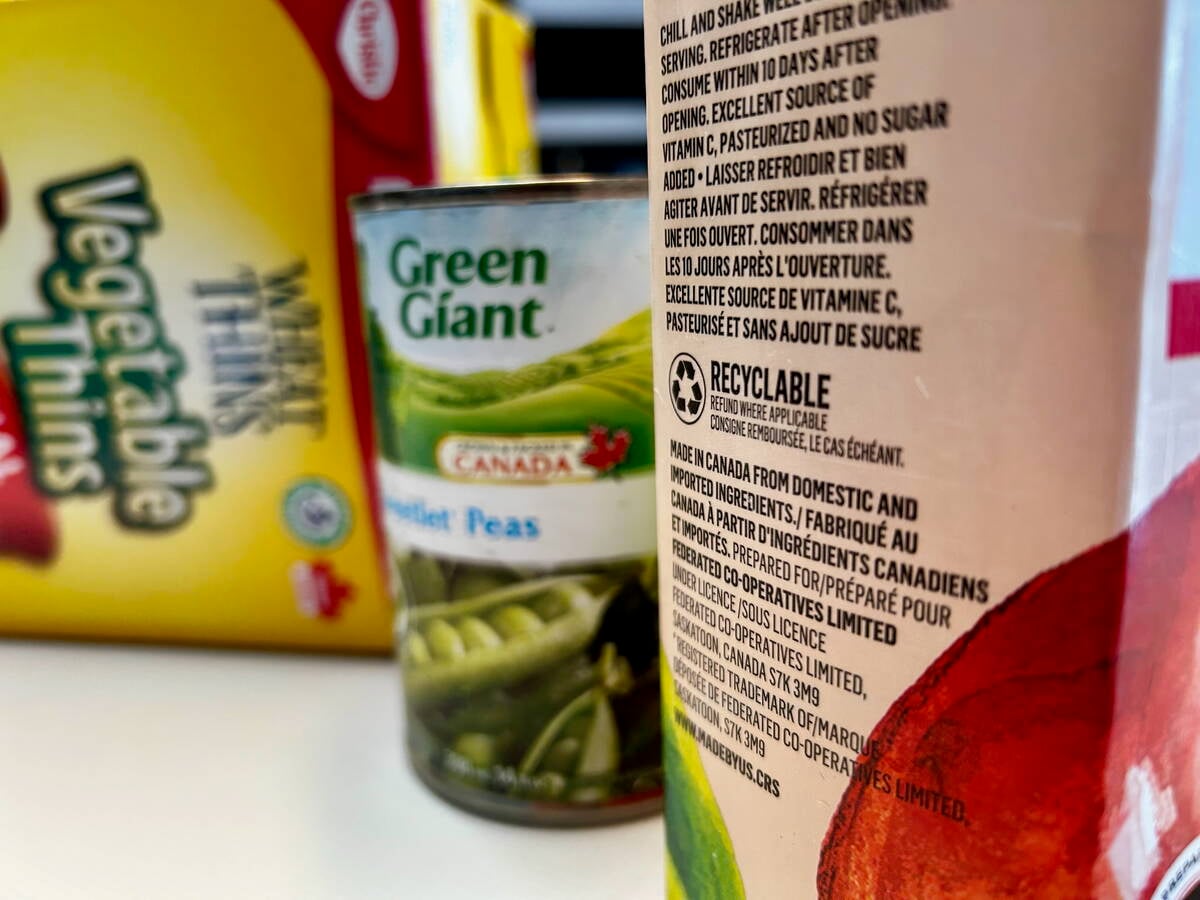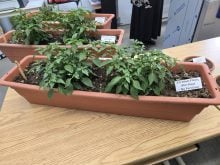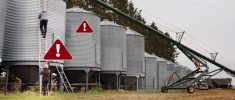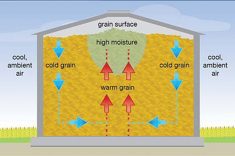Digvir Jayas, an agricultural engineer who contributed to ground-breaking grain science research over 30 years, is one of twelve people who will receive the Order of Manitoba.
“I was certainly very deeply honoured and humbled to receive this honour,” said Jayas, the current president of the University of Lethbridge.
Around May, Jayas learned he was going to be entered into the Order of Manitoba, the province’s highest honour, when he got a call from Anita Neville, the lieutenant governor of Manitoba, .
Read Also

Unclear food labels hinder Canada’s ‘buy local’ surge
“Maple-washing” on Canadian food packaging makes label claims hard to keep straight and hurts both farmers and consumers trying to buy Canadian, economist says.
“I was thrilled. I did not expect it, so it was a pleasant surprise,” said Jayas.
The formal ceremony will be held on Thursday, July 17, at the Manitoba Legislative Building.
Jayas has a long-standing relationship with Manitoba. After completing a Bachelor of Agricultural Engineering at G.B. Pant University of Agriculture and Technology in Pantnagar, India, Jayas moved from India to Winnipeg to do his master’s at the University of Manitoba.
“At the time when I finished my master’s, the department did not have a PhD program. I probably would have stayed in Manitoba to do my PhD, but then I went to the University of Saskatchewan to do my PhD,” he said.
Jayas is an agricultural engineer, which means he uses the application of engineering to solve problems in the biological world. Grain is a biological material that spoils, making it the perfect system for agriculture engineering storage systems, he said. Jayas is world-renowned in his research on how to stop grain spoilage by measuring carbon dioxide.
For his master’s degree, Jayas studied how spoiling grains produces carbon dioxide, moisture and heat.

Temperature measurement and heat are commonly used as indicators of spoilage, but Jayas chose to study the increase in carbon dioxide. He was interested in using sensors to measure carbon dioxide in the grain bin. He looked at the best location to put a sensor, even if it wasn’t clear where spoilage was occurring in the bin. He wanted to find out the minimum resolution of the sensor that could be used to detect spoilage.
“Carbon dioxide is a very good spoilage indicator, because the ambient carbon dioxide is so low, so if the carbon dioxide goes up, it would be able to give the warning sign for the anticipated spoilage,” he said.
Over the years, he has completed mathematical modelling work to understand the stored grain ecosystem. Jayas also worked with the horizontal air flow drying systems and developed techniques to find insects in grain based on thermal imaging and near infrared imaging. He led the research team that created the first 3D model to track heat, moisture and carbon dioxide in grain storage. He has collaborated with researchers in Canada, China, Ukraine, India and the United States and made a significant impact on grain storage, drying and handling systems. His work has led to the rapid adoption of carbon dioxide use in insect control programs. Jayas has co-authored over 1,000 technical articles in scientific journals, conference proceedings and books dealing with issues of storing, drying, handling and quality monitoring of grains.
Over the 30 years of his research and teaching career, Jayas has earned many accolades.
He was the vice-president of the University of Manitoba and a distinguished professor in the Department of Biosystems Engineering .
When Jayas gained that title, it was limited to only 20 professors in the province,
“Somebody had to retire or resign before the new opening would occur,” he said.
Jayas has also had the honour of being named a senior Canada Research Chair in stored grain ecosystems by the federal government. He was involved with the Natural Science and Engineering Research Council of Canada, serving first on the council and then as interim president. Jayas has been inducted into the Manitoban and Canadian Agricultural Halls of Fame.
Jayas became a member of the Order of Canada in 2018. He was recognized for the work he has done on agri-food systems and the changes his work has brought to Canada and globally.
He has been married for over 40 years to his wife, Manju, and they have three sons and five grandchildren.
Jayas is a believer in the power of research. It can help solve whatever problem farmers, or society in general is facing, he said.
“Research helps in understanding what the causes of the issue are, or the causes of the problem are, and then helps find the solutions. Research also helps in creating a unique training environment for undergraduate and graduate students because they work on that research program and it helps generate the ideas which then can be either commercialized or popularized,” he said.
“As an example, horizontal air flow drying, I decided not to patent it. Rather than patenting it, I decided to share that to the farming community and then many other companies now build and market horizontal air flow drying systems,” he said.
“Research generates guidelines which farmers can use and helps in growing the cultural aspect in the society which is very important for improving the living standards in any society,” he said.
Jayas grew up on a farm in India and was influenced by the work ethic of his grandparents. His grandfather was committed to building and supporting the community, a value Jayas shares, having learned the value of volunteerism observing his grandfather. He also took much of the inspiration for his life’s work due to his time growing up on the farm.
“I saw a lot of problems farmers face and the help they needed to solve those problems,” he said. “Grain storage, the issue that I have worked on most of my life, really, was because I used to see so many grains spoiling in India. And I always used to think there must be something which could be done to reduce the spoilage of grains,” he said.
“I’m very grateful for the students and also my colleagues or other researchers in the grain industry, because most of the research projects build on their earlier former accomplishments, and they complement what other people have done,” he said. Undergraduate students, graduate students, post-docs and other researchers have also contributed to his work and allowed him to achieve everything he has done so far.
Jayas is currently the president and vice-chancellor at the University of Lethbridge. He was attracted by the smaller city, and the smaller university.
The University of Lethbridge was also committed to diversity, equity and inclusion and creating a respectful environment.
When he had visited Lethbridge in the past, he found the university and the general community both very welcoming.
“The university was also looking at the possibility of starting a program in agriculture engineering, so hopefully with my background, I can help with that,” he said.
















